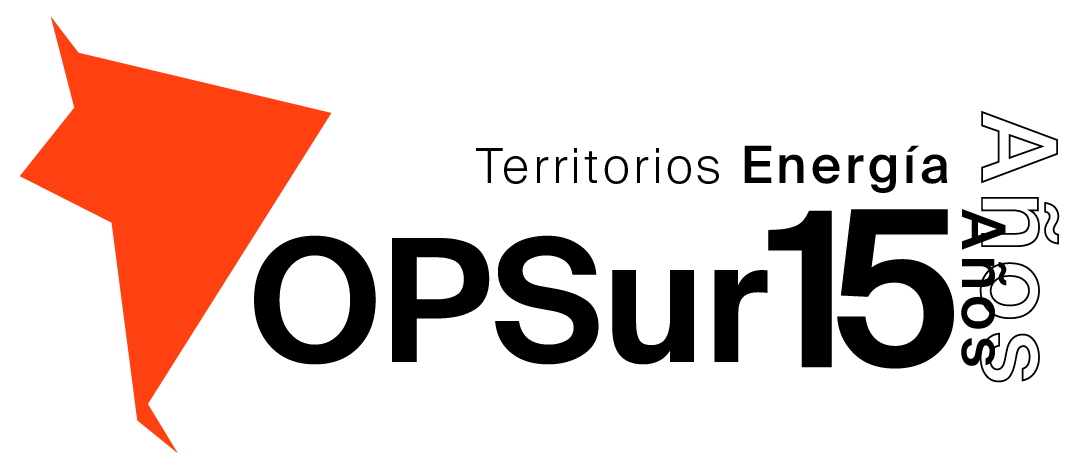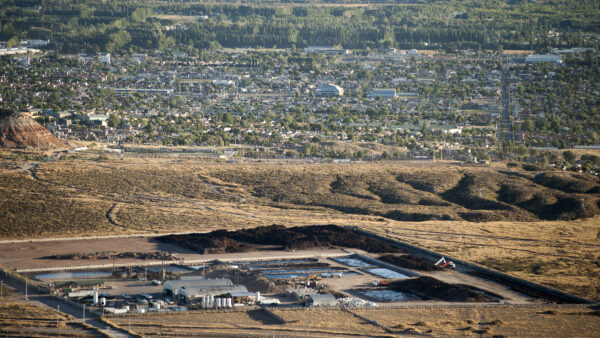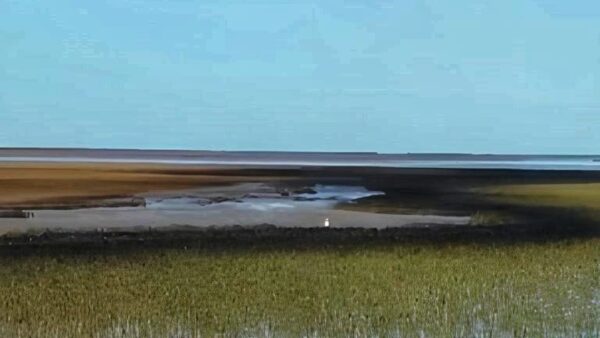The presumption of a high prevalence of different kinds of cancer in Caleta Olivia and its relation with the consumed water and the exploitation of hydrocarbons is an enigma that has been raised for almost over two decades and still not cleared. Doubts are still present within the citizenship even considering that local agencies from the province of Santa Cruz and some others at a national level have asserted that nothing out of the expected parameters has been detected. In the meanwhile, drinking the water coming out of the tap has almost become a matter of faith in a town where water supply through the network is not guaranteed.

By Hernán Scandizzo / OPSur
“Caleta has more than eighty thousand citizens, we would need an approximate of 1000 m3/h to be able to have a water distribution that would allow an influx of four hours a day in each home. This does not happen, we are obtaining around 450 m3/h from the water intake of the Musters Lake and approximately 300 m3/h from the aquifers, which, in theory, is good” outlines Facundo Prades, the mayor of Caleta Olivia. The statement of the officer is an invitation to cross-examination: why is the water from the aquifers good? (in theory) “Because I don’t have a research stating that the water is good” he answers quickly and then adds “we understand that this goes through the Public Services’ labs and they are the ones who conduct quality analysis and this water is obviously in good conditions and it can be consumed”.
The doubts that are present within the community arise in these statements of the chief mayor. Eight months have gone by since this testimony was recorded and the doubts are still there. In fact, the neighbors from the north of the Province of Santa Cruz have now been demanding that doubt to be cleared for several years. The distrust regarding the quality of the water coming from the Patagonian aquifer -captured from the water wells located in Meseta Espinosa and Cañadón Quinta- has its source in the indisputable fact that it was in such area where the oil exploitation has first begun in the north of Santa Cruz.
“A great percentage of the families of Caleta Olivia do not consume tap water, and I have been told that in other towns this number is even bigger” assures Javier Rivarola, a journalist from Radio 21 FM 90.1, a local station that stands out for keeping their microphones open to the community. “Public Services state that the water is drinkable, however in 2014 there were complaints from the neighbors because, in one of the places where the water is captured (the Patagonian aquifer), the results had not been good. Public Services conducted some studies and they got good results”. However, the provincial agency does not seem very trustworthy as “very few people consume tap water” the communicator repeats.
In 2014, S.O.S Agua – ONG Viento Sur tested some water samples captured from eleven water wells. In six of them, the presence of hydrocarbons and heavy metals was detected. “We reported this situation to the National Congress, we gave out copies of the water samples that showed arsenic and hydrocarbon contamination in different cisterns and wells from Messeta Espinosa and Cañadón Quinta or Cañadón Quintar. We were treated, at the very least, as reckless, when in reality we were aware of the contamination due to the number of people that have died through the years” reports Mary Lopez, a retired teacher that has several years of walking the streets, knocking on doors and demanding solutions for Caleta Olivia and the north of Santa Cruz. “The basic right to access drinkable water, the sanitation, we must have those no matter what” Lopez stresses. She details the complaints made in the National Ombudsman Office and demands the authorities to publicize the sampling verifying the water contamination.
“We have made tireless requests to be able to conduct analysis on the water” highlights the mayor Facundo Prades. The officer also pointed out that in 2003, when his father, Carlos Prades, was a national congressman, he presented a draft resolution for the Ministry of Health to conduct a study of the prevalence of different kinds of cancer in Caleta Olivia. Such initiative also requested the analysis of tap water, volcanic ashes, high and medium voltage power lines and power converters, among others “to determine whether they contain a certain cancer risk degree for the population”. “Back then, the answer was that the quality of the water was within the parameters established by the National Food Code and that the deaths from cancer or malignant tumors were also within the normal parameters for a society with the number of citizens that our province had and, particularly, Caleta Olivia and the north area of Santa Cruz” asserts the mayor.
In such draft resolution, the then national congressmen Carlos Prades warned the lack of information and the non-existence of prevention and early detection programs. “The province does not count with official numbers, as a survey that would allow having accurate data has never been carried out. What we could ascertain that cancer is one of the principal death causes in different areas of the province. (…). Also, there are no technical or scientific reports that would allow establishing them (the causes).”
“If there is no number (record of patients and dead people from cancer) there are no statics, and if there are no statics there are no possible public sanitary policies. I think this constitutes the felony of abandonment and neglect of people” sentences Mary Lopez. “People are dying, very young people of 25, 30, 35 years with cancer. And now little kids are also dying. There are several cases of multiple sclerosis, myasthenia gravis, Guillain-Barre, rare diseases. In the north area of Santa Cruz we have this kind of pathologies and not from long ago” she ascertains, and she is convinced that all of this has its origin in the contamination produced by the exploitation of hydrocarbons. In the same line, the mayor Prades affirms that “in a lot of neighborhoods, in each block, there are lots of people” that have that “damn disease” o that had a tumor removed from them, or that have relatives in that situation. “That is why a sensation exists that the level of cancer patients or the level of malign tumors is very big in the area”.
In the bases of the project of the then congressmen Prades, two resolutions of the City Council were quoted: one from December 2000 and another from August 2001. In such resolutions, the concern of the legislative municipal branch due to the “existing mark of carcinogenic diseases”. Moreover, through one of these resolutions, the Ministry of Health of Santa Cruz was required to draft a “static chart concerning the localization of cancer cases -in any of its kinds- in the city of Caleta Olivia, compared to the cases existing in different cities of the province, the region, the country, and, if possible, to different cities of the world”
The conviction that, in the city, the incidence of different kinds of cancer is superior to the statistically expected is present within lots of neighbors of Caleta Oliva. Precisely, one of the causes of such spread conviction is the lack of statics that can confirm or deny it. More than sixteen years have gone by since the request made by the local City Council to the government of Santa Cruz and such studies are still pending.
Sacrifices
“The main oil companies in the area are YPF, Pan American Energy, and Sinopec, says Facundo Prades.”The providers are largely responsible for the environmental damage, even in the renegotiation of the oil areas, there is a revenue for the environmental liabilities that they were bound to remedy or pay. They have not paid for it and neither have them started to comply with such regulation” the mayor from Caleta Oliva states. “Planting an herb or cleaning ten cubic meters in a pyrolytic oven does not constitute a remedy for the environmental damage that they have created in these communities. Handing out shirts for soccer clubs, donating desks and old informatic equipment to school, entities or towns does not clean up the environmental damage”, he highlights, while warning that collecting municipal taxes to the companies in the sector is “problematic”, so to say.
“Nowadays, Caleta Olivia is a town with almost six thousand five hundred or maybe six thousand seven hundred public employees and a hydrocarbon activity that leaves us with practically nothing. If you take a walk around you are able to spot sewage overflows everywhere, an infrastructure that has not been modified during the last twenty years approximately. The school infrastructure and the one for sports or cultural activities are very scarce” Javiera Rivarola details. Her testimony is easily verifiable by merely walking some blocks around the city. The waste waters go down the streets searching the sea level, the same sea level where tankers wait their turn to be connected to the monobuoy of the maritime oil terminal and then take away the crude oil arising from the insides of the north of Santa Cruz. “In the last fifteen years, approximately, Caleta Olivia has grown from having twenty or thirty thousand citizens to having seventy-five thousand and such growing was not planned” assures the journalist from radio 90.1. Although in the testimonies the estimations on the actual population vary, they agree on its exponential growth and on the fact that the town is overwhelmed by its population.
“Some people say this is a sacrifice area… sometimes there are some words that one would prefer not to learn, that here the important thing is the people living and not the natural resources, the oil, or pretty near here, the mining. That this is not a place to live, it is a place where lives are sacrificed or people are sacrificed to be able to extract what the ground has and everything else, at any cost.” says the priest Néstor Zubeldia, who assures that from the conversations he maintained with the neighbors, he started to take a closer look into the matter until he became a key person in fighting for water. “A place that has had a population for so many years, a growing population, and that still has not solved its water issues leads to believe it has been really declared as a sacrifice zone” he emphasizes.
“I think some problems, punctually the water issue, are a political matter because in the last years we have had access to many financial resources which means that this is not an economic issue. Neither do I think we are dealing with a technical problem, we are in an area in which -I would dare to state- we have the best technology in the country, which usually happens in those places where there are oil extraction and mining. So, if the matter is not an economic one or a technical one, this means that the resources may be achieved one way or another. Which leads me to believe that this is clearly a political issue” the priest asserts.
By the time he was interviewed, Zubeldia was in charge of the Salesian Parish of the place. He was until the end of January, when he was transferred to Bernal, in the suburban area of Buenos Aires. This fact has been adjudicated by some neighbors of the city to the influence of powerful sectors that were bothered by the compromise of the religious man towards the claims of the community.
Environment and heritage
“Nobody will be left in Santa Cruz, in the north area we have serious water issues due to the oil companies, and in the south area we also have water troubles because of the miners. We have health issues, nobody takes responsibility, not even for a person that travels to have medical attention in Comodoro Rivadavia (70 km away). No oil company states: do you need money to send this number of sick people to Comodoro Rivadavia to be checked by a doctor? Mary López makes a pause and lets a word flow after the other, words that seem to crash into each other due to their eagerness to be said, to communicate, to expose such an urgent situation. “The State is absent, the oil companies are entering the universities and brainwashing young people, it is enough to see the papers to notice. They are making what (Pablo) Escobar, the (Colombian) drug trafficker used to do with the people, give out money and make people happy. Here, they offer young people scholarships” she affirms.
Her words sound stark, sometimes apocalyptic, it is the testimony of someone who is experiencing with their own body the consequences of something that lacks a name at the institutional level because there are no studies that could certify it.
“They will not arrange a helicopter flight for those who are in a critical health state to go as fast as possible to Comodoro, to the airport, to arrive faster to Capital Federal. Sometimes we lack the necessary elements to make a radiography. We may not carry out certain medical tests (in the Local Hospital of Caleta Olivia), you have to go Comodoro, and if someone is sick and very bad he is not able to resist the whole rattling of the poor roads. We feel very abandoned” Mary pities. There are anguish and indignation in her voice, which seem to increase by each minute that goes on without answers.
“I love Caleta Olivia, but I deeply regret this total downfall situation we have had. The authorities have still not recognized the contamination problem” affirms Graciela Reartes, another retired teacher who that, just like Mary Lopez, has been fighting for years to change the state of thing. “Las Heras has contaminated water, tests have been made in laboratories in Rio Negro which prove that it has hydrocarbons. (Pico) Truncado also, Koluel Kayke had a very high percentage of cancer in the whole population. This situation, instead of creating a defense reaction towards life and health, creates depression” she states. Her voice breaks, she makes a pause and then adds “The man is a social being, not only a body, it is a body and an environment, heritage and environment, not only one of them but both. Our environment has started to delete the intellectual abilities and the lives of lots of people because it is very damaging. Head tumors are not developed only because of organic reasons, but also because of the emotional matters that are triggered by the organic ones.”
The testimonies of Mary Lopez and Graciela Reartes express the anguish of those who have the certainty that things are not good at all and that the passing of time only worsen them. That anguish is also urgency. In the meanwhile, in a city where water supply is not guaranteed, drinking the liquid that comes out from the tap becomes almost a matter of faith.
*This article was part of a series of journal articles “Del agua y del petróleo, preguntas sobre el presente de la cuenca del Golfo San Jorge” (Water and oil, questions about the present of the basin of San Jorge’s Gulf).
Source:
http://opsur.org.ar/2017/03/27/consumir-agua-de-red-es-casi-una-cuestion-de-fe-



